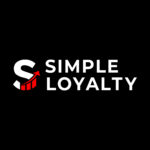Estimated Reading Time: 9 minutes

Building customer loyalty for your retail store is easier and faster than most people imagine.
What if I told you that you could launch a complete loyalty program in less time than it takes to brew a cup of coffee?
No coding. No messy setup. No waiting months for results.
Studies show 82% of shoppers are more likely to stick with stores that offer rewards. And here’s the kicker: customers who join one program usually look for more.
That means if you don’t offer one, you’re basically handing your best customers to your competitors on a silver platter.
In this guide, we’ll show you how to set up a retail loyalty program in just 10 minutes, complete with simple steps, real examples, and proven tips to keep your customers coming back again and again
What Makes a Great Quick-Launch Loyalty Program?
Before we look at specific programs, let’s talk about what makes a fast-launch loyalty program system different from complicated ones that take months to set up.
Easy Setup, No Coding
Your rewards program shouldn’t need a tech person. The best quick-launch programs work without technical stress, IT people, or weeks of setup. If it takes longer than your lunch break to get going, it’s not truly fast.
Easy for Staff to Explain
If your team can’t explain your loyalty program in 30 seconds, it’s too hard. A good quick-launch program should be just a tap or a scan—something your newest worker can show customers on their first day.
Focus on One or Two Things
Keep it simple. Reward repeat visits, birthdays, or referrals, but don’t confuse customers with complicated systems or dozens of ways to earn points. Simple programs get more people joining.
Made for Quick Results
A fast loyalty program isn’t about being perfect from day one. It’s about starting today and bringing customers back tomorrow. You can always improve and add more later based on what your customers actually do.
7 Quick-Start Loyalty Program Ideas for Retail Stores
These aren’t complicated, months-long projects. These are simple, proven ways to keep customers coming back that you can set up during your lunch break.
Pick one, follow the steps, and you’ll have a working loyalty program before the day ends.
Digital Punch Card Program
Skip paper cards, go digital instead.
Customers scan a QR code when they check out, and their visits get tracked automatically. After a certain number of purchases, they get a free reward.
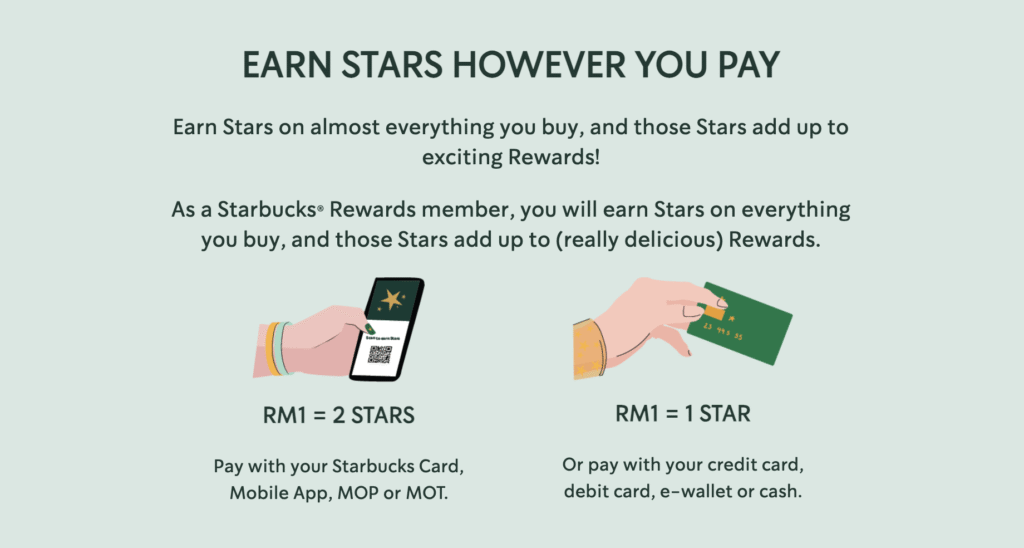
Why it works: No printing needed, easy to track, and customers can check rewards anytime, keeping them excited to return.
Example: Starbucks Rewards lets customers collect “stars” via QR scans. 150 stars = free drink. The system works seamlessly across apps, websites, and stores.
Set-up tip: Make the first reward easy to get. Set it at 6-8 purchases, not 15. Quick wins keep customers interested and coming back.
Birthday Rewards Program
Everyone loves feeling special on their birthday. Get birth months when customers check out and send automated birthday rewards, a discount, or a freebie good all month.
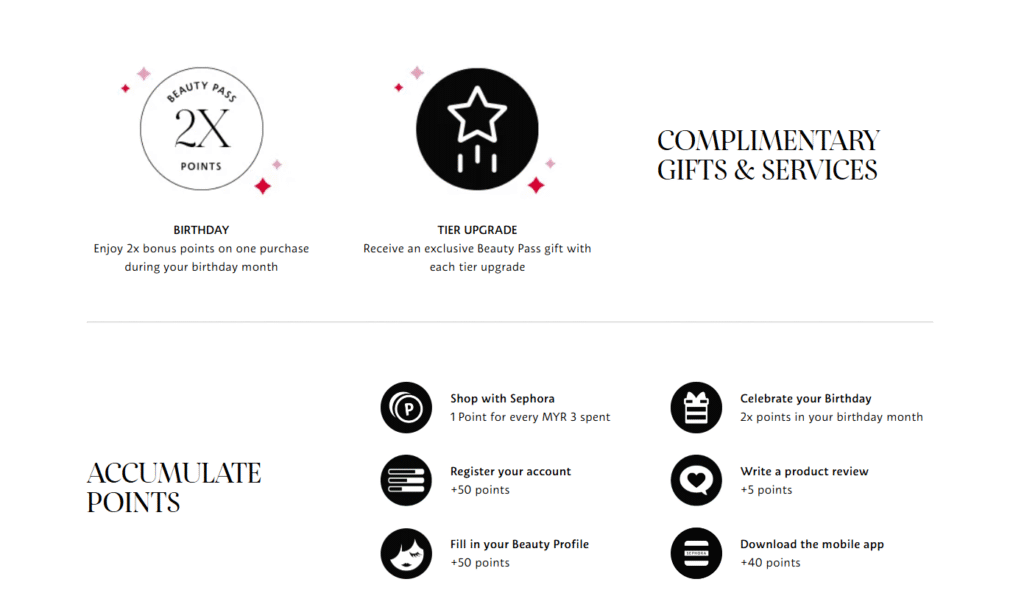
Why it works: Birthday emails get opened and used more than regular sales emails. It’s an emotional trigger that gets people to buy, and customers actively look for birthday deals from their favorite stores.
Example: Sephora Beauty Insider sends members free birthday gifts and exclusive discounts, a simple but powerful gesture that keeps shoppers loyal every year.
Set up tip: Send the reward at the start of their birth month so they have time to use it. Add a warm, personal message to make it feel special, not just another promo email.
Referral Rewards Program
Your happy customers are your best salespeople.
Give them unique codes to share with friends, and reward both the person who refers and the new customer when someone uses it.
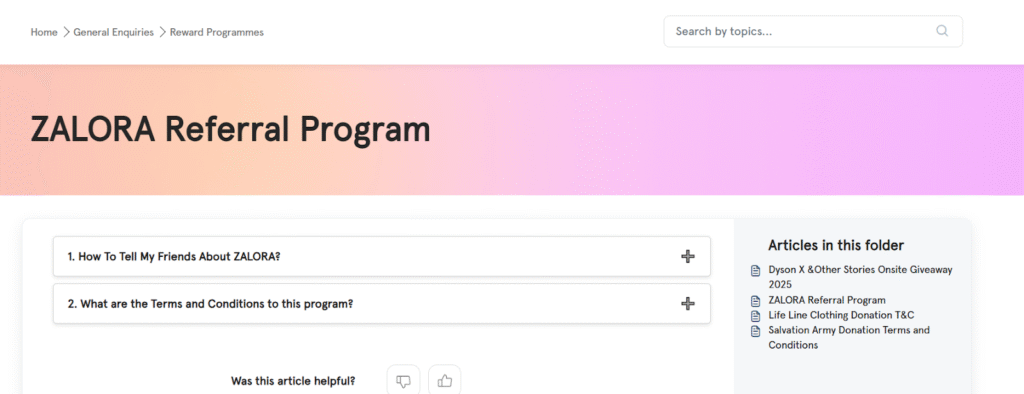
Why it works: People trust friend recommendations over ads. You get new customers while making your current ones even more loyal, a true win-win.
Example: Zalora gives 15% off to new shoppers and store credit to referrers, all shareable easily through WhatsApp.
Setup tip: Make it fair for both sides. RM20 credit for both feels good and makes people want to share. Yes, it costs you RM40 upfront, but you’re getting a customer worth RM200+ over time.
First Purchase Welcome Bonus
Remove the barrier to joining by offering something right away. New customers get a discount on their first purchase just for signing up, no waiting, no complicated rules.
Why it works: When you give first, customers feel like they should give back. You get their contact info when they’re already buying, not asking them to trust “future benefits.”
Example: Reward new members 10% off instantly and free shipping, along with the discount code shown right after signing up for easy use.
Setup tip: Keep the discount at 10-15%. This is the sweet spot between feeling valuable to customers and protecting your profits.
SMS Exclusive Offers Program
Build a VIP text club for flash sales and early access to new items. Text messages generally have higher open rates (way higher than email) and create real urgency that gets immediate action.
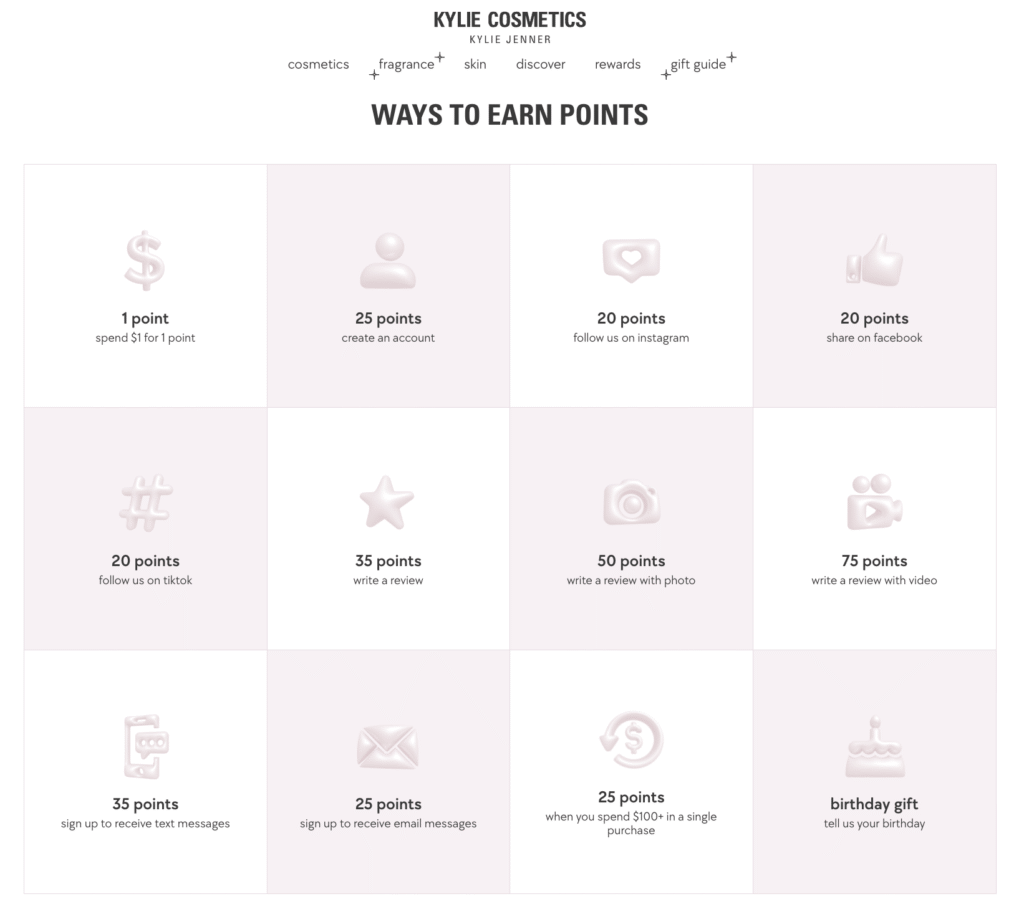
Why it works: Urgency and exclusivity. “24 hours only” text offers trigger instant FOMO (fear of missing out).
Examples: Kylie Cosmetics sends SMS alerts for new launches, giving subscribers a 15-minute early access window before products go public. It builds VIP excitement items often sell out before the official release.
Setup tip: Never overuse this. Send a maximum of two messages per month, or people will unsubscribe fast. Every message must feel truly exclusive and time-limited.
Social Media Points Program
Turn customers into brand promoters by rewarding them for engaging with you online. It’s free marketing that builds community and increases how many of people who see your brand.
How it works: Customers earn points or rewards when they:
- Follow your social media pages
- Share your posts to their stories or feeds
- Tag your brand in photos wearing or using your products
- Use your branded hashtag
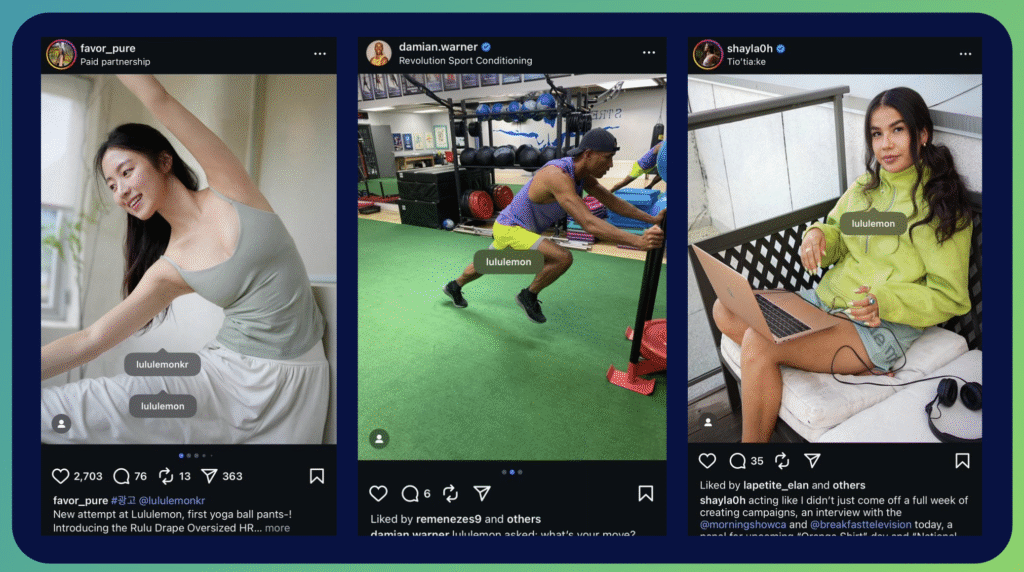
Examples: Lululemon encourages customers to tag #thesweatlife in workout photos. Featured posts get reshared on Lululemon’s main account and sometimes earn free gear, turning social recognition into the ultimate reward.
Setup tip: Keep it simple. Too many ways to earn points confuse customers and make fewer people join. Focus on 2-3 key actions that help your business most.
Instant Cashback Program
Give customers a percentage back on every purchase, usually 5% stored as credit for future purchases.
No complicated point math, no confusing levels.
Just instant gratification.
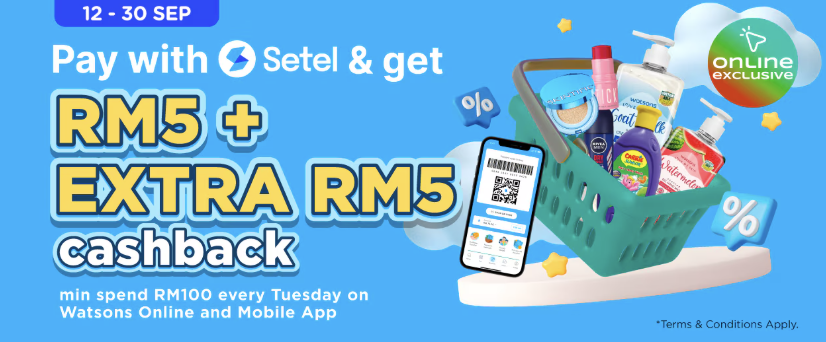
How it works: Customers automatically earn a set cashback amount whenever they meet a spending threshold, which they can use on their next purchase.
It’s simple, visible, and keeps them returning.
Example: Watsons Malaysia‘s collaboration with Setel is a perfect illustration. Every Tuesday, customers who pay with the Setel app on Watsons’ online store or mobile app get RM5 cashback, plus an extra RM5 when they spend a minimum of RM100.
This promo creates a habit. Regular shoppers know that “Tuesdays mean cashback”, so they plan their orders accordingly.
Setup tip: Highlight cashback rewards clearly on receipts and in confirmation emails. The more visible the reward, the more likely customers are to come back and redeem it.
How to Pick the Right Loyalty Program for Your Store
Feeling overwhelmed by choices?
Use this simple guide to pick the best loyalty program for your specific business:
Think About Your Store Type
Think about what you actually sell.
A fashion boutique might do well with a social media points program or digital punch card, while an electronics or furniture store with higher-priced items could do better with an instant cashback program that rewards bigger purchases.
Observe How Often Customers Buy
How often do your customers usually shop? Frequent buyers (weekly or monthly) respond well to programs that reward repeat visits like punch cards.
Check Your Tech Skills
Pick a loyalty program that your team can manage easily without needing IT help or complicated software setup.
A hard system that needs constant work will fail no matter how good it looks on paper. If you’re just starting out, consider simple options like a first purchase welcome bonus or referral program.
Set a Real Budget
Make sure the program fits your marketing budget and won’t cut too much into profits.
Some programs, like text clubs or digital punch cards, can be very affordable, while others need bigger investments. Calculate what you can give away without hurting your bottom line.
Plan for Staff Training
Your team should be able to explain the loyalty program and help customers join within minutes. Easy-to-learn programs that only take a few minutes to teach make sure things run smoothly day-to-day.
Retail Loyalty Program FAQs: What Businesses Ask Most
Do small stores really need loyalty programs?
Absolutely. Small stores actually benefit more than big chains because loyalty programs help you compete on relationships rather than price.
How do I know if my loyalty program is working?
Track three key things: repeat purchase rate, average order value, and customer lifetime value. If these numbers go up after starting your program, it’s working.
Can I run multiple loyalty programs at once?
Start with one program and get good at it before adding others. Multiple programs confuse customers and weaken your message.
Conclusion
Don’t wait for a loyalty program; you’re losing customers every day to competitors.
Pick a loyalty program that fits your store, set it up today, train your team in 30 minutes, and start promoting it.
Try SimpleLoyalty before your best customers become someone else’s regulars.


